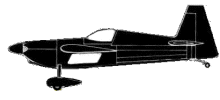
ASN Wikibase Occurrence # 138865
This information is added by users of ASN. Neither ASN nor the Flight Safety Foundation are responsible for the completeness or correctness of this information.
If you feel this information is incomplete or incorrect, you can submit corrected information.
| Date: | Thursday 29 September 2011 |
| Time: | 18:50 |
| Type: |  Zivko Edge 540 |
| Owner/operator: | Private |
| Registration: | N42GP |
| MSN: | 0015 |
| Engine model: | Lycoming IO-540 SER |
| Fatalities: | Fatalities: 1 / Occupants: 1 |
| Aircraft damage: | Substantial |
| Category: | Accident |
| Location: | 250 Chualar Canyon Road, Chualar, CA -
 United States of America United States of America
|
| Phase: | Manoeuvring (airshow, firefighting, ag.ops.) |
| Nature: | Private |
| Departure airport: | Salinas, CA (SNS) |
| Salinas, CA (SNS) | |
| Investigating agency: | NTSB |
| Confidence Rating: |
The owner/pilot of the experimental amateur-built aerobatic airplane was a part-time competition pilot, and he flew the airplane almost daily to practice aerobatics. His typical routine was to practice over his vineyards, located about 9 miles south of the airport where he based the airplane. On the day of the accident, the pilot took off, flew directly to his vineyard, and arrived there about 3 minutes later. He spent the next 4 minutes performing maneuvers, several of which could induce high g-loads. About 25 seconds after a steep climb and an equally steep descent and level-off, the pilot made a rapid course-reversal turn and began a loop, which terminated in ground impact. The airplane impacted in an approximate wings-level attitude, with high forward velocity and minimal vertical velocity. The debris path was aligned with the loop, and was nearly perpendicular to the vineyard trellis rows constructed of steel poles, steel wires/cables and nylon mesh. As a result, the airplane was highly fragmented. All major components of the engine and airplane, including all aerodynamic control surfaces, were accounted for at the accident site. A postaccident examination of the flight control system, airplane structure, propeller, and engine revealed no evidence of mechanical malfunctions or failures that would have precluded normal operation.
The pilot’s toxicology analysis identified the low-level presence of ethanol, likely as a result of ingestion. The detected level of ethanol was unlikely, in isolation, to have significantly impaired the pilot’s performance, although there may have been some negative effect. The pilot also had a significant amount of hydrocodone in his blood, and the evidence indicated that he was a chronic user. Although hydrocodone is known to have an impairing effect on infrequent users, the effects on chronic users are less well-defined, and, therefore, the level of impairment due to the hydrocodone alone could not be determined. Similarly, the performance effects of the combination of alcohol and hydrocodone are not well defined, and although the pilot may have been impaired, the extent of his impairment could not be determined.
Significant coronary artery disease and a previous infarction put the pilot at risk for an acute cardiac event, including recurrent infarction and acute arrhythmia. The toxicology revealed the presence of phendimetrazine, which, in combination with the pilot’s history of hypertension, can significantly increase blood pressure, and may have exacerbated the risk of an acute cardiac arrhythmia.
The pilot had experienced g-induced loss of consciousness (g-LOC) during aerobatic maneuvers in the 3 months before the accident, but he did not report it to any medical personnel, and he did not cease aerobatic flying. Several of the maneuvers performed on the day of the accident could induce significant g-loads, and the sudden changes in cardiac work associated with g-loading and -unloading presented another risk factor for cardiac arrhythmia.
Therefore, the pilot’s coronary artery disease, his previous infarction, his use of phendimetrazine, and his conduct of aerobatics all increased his risk of an acute cardiac arrhythmia. It is very likely that this pilot was medically incapacitated either by g-LOC alone, or in combination with an arrhythmia, and that this resulted in the ground impact. The investigation was unable to determine what effect the pilot’s chronic opioid use had on either his pre-flight decision-making or his performance during the flight.
Probable Cause: The pilot’s incapacitation due either to g-induced loss of consciousness alone or in combination with a cardiac arrhythmia. Contributing to the accident was the pilot’s use of several medications.
Accident investigation:
 |
|
Sources:
NTSB
Location
Revision history:
| Date/time | Contributor | Updates |
|---|---|---|
| 30-Sep-2011 07:46 | RobertMB | Added |
| 30-Sep-2011 10:38 | 78Delta | Updated [Registration] |
| 10-Oct-2011 22:04 | Geno | Updated [Source] |
| 21-Dec-2016 19:26 | ASN Update Bot | Updated [Time, Damage, Category, Investigating agency] |
| 27-Nov-2017 17:13 | ASN Update Bot | Updated [Operator, Other fatalities, Nature, Departure airport, Destination airport, Source, Narrative] |
Corrections or additions? ... Edit this accident description
The Aviation Safety Network is an exclusive service provided by:


 ©2024 Flight Safety Foundation
©2024 Flight Safety Foundation